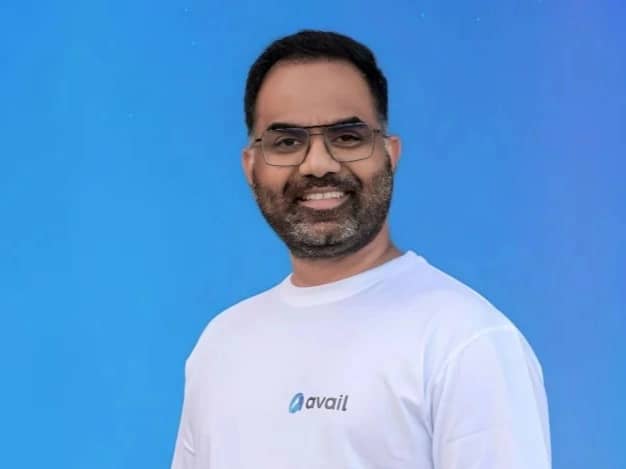위키 구독하기
Share wiki
Bookmark
Anurag Arjun
Anurag Arjun
**아누라그 아르준(Anurag Arjun)**은 선도적인 이더리움(Ethereum) 확장 솔루션인 폴리곤(Polygon)의 공동 설립자 겸 최고 제품 책임자입니다. 아르준을 비롯하여 잔티 카나니(Jaynti Kanani), 산딥 네일월(Sandeep Nailwal), 그리고 미하일로 브젤리치(Mihailo Bjelic)가 이끄는 폴리곤은 2019년 2600만 달러의 시가총액에서 2021년 140억 달러 이상으로 성장했습니다. [14]
폴리곤에서의 중요한 역할 외에도, 아누라그 아르준은 2024년 7월 24일에 공식 출시된 어베일(Avail)을 설립했습니다. [1][4][9]
교육
2006년, 아르준은 니르마 공과대학(Nirma Institute of Technology)에서 컴퓨터 공학 학사 학위를 받았습니다. 또한 CAT(인도경영대학원 입학 시험)에서 99.6퍼센타일을 기록했습니다.
개인 생활
아누라그 아르준은 인도 카르나타카주 벵갈루루 출신입니다. 그는 영어, 구자라트어, 힌디어, 말라얄람어를 구사합니다.[8]
경력
아르준은 2006년 코그니전트(Cognizant)의 프로그래머 분석가로 경력을 시작했습니다. 그는 또한 인도 푸네에 있는 코그니전트 부서의 생명 과학 솔루션 및 컨설팅 그룹의 일원이었습니다. 2008년에는 덱스터 컨설팅(Dexter Consultancy)의 제품 관리자를 역임했습니다. 아르준은 5년 동안 그곳에서 근무했으며, 이 기간 동안 제3자 웨어러블 기기를 통한 원격 중요 건강 매개변수 모니터링 플랫폼인 HealthTrac과 의사를 위한 무료 SaaS 기반 클리닉 관리 도구인 HealthOne이라는 두 가지 제품을 공동 설립했습니다.[2]
저는 기술 전문가로서 통합을 가장 좋아합니다. 서로 다른 앱이나 도메인의 관행을 가져와 적용하는 것을 말이죠. 기본적인 코딩 기술, 고급 제품 정의 전문 지식, 중급 고객 조사 및 고객 개발 기술을 가지고 있습니다.
2013년, 아르준은 덱스터 컨설팅을 떠나 SNL 파이낸셜(SNL Financial)의 프로젝트 매니저로 일했습니다. 아이리스 비즈니스 서비스(IRIS Business Services)에서는 1년 만에 제품 관리 부사장으로 승진했습니다. 아르준은 40명 이상의 부서 간 팀을 감독하여 제품을 완전히 개편했으며, UX 프로세스 및 디자인, 애플리케이션 성능 최적화, 그리고 더 나은 코드 유지 관리에 중대한 변화를 가져왔습니다.
폴리곤(Polygon)
2017년 12월, 아누라그 아르준은 나중에 폴리곤(Polygon)으로 이름이 바뀐 매틱 네트워크(Matic Network)의 공동 설립자 겸 최고 제품 책임자가 되었습니다. 이 직책에서 아르준은 회사의 제품 로드맵을 구상하고, 파트너 네트워크와의 통합을 감독하고, 플랫폼 개발을 담당하는 팀을 관리했습니다.
폴리곤(Polygon)은 블록체인(blockchain) 업계에서 플랫폼으로 자리매김했습니다. 그 2계층(Layer 2) 확장 솔루션은 이더리움(Ethereum)과 관련된 확장성 문제를 해결하여 더 빠르고 비용 효율적인 거래를 가능하게 합니다. 이는 알케미(Alchemy)의 데이터에 따르면 2022년 8월까지 폴리곤에서 37,000개 이상의 탈중앙화 애플리케이션(dApps)이 개발되는 결과를 가져왔습니다.
Aave, Sushiswap, Adobe를 포함한 여러 프로젝트와 회사가 폴리곤(Polygon)의 기술을 채택했습니다. 이 플랫폼의 성장은 확장성, 상호 운용성, 사용자 중심 설계에 기인하며, 이더리움 생태계의 구성 요소로 자리 잡고 있습니다.
아르준은 2024년 6월 코인텔레그래프(cointelegraph)와의 인터뷰에서 폴리곤(Polygon)의 개발은 이더리움(Ethereum) 생태계와 경쟁하기 위한 것이 아니라 보완하기 위한 것이라고 명확히 했습니다. 아르준에 따르면, 초기 목표는 이더리움을 위한 확장 솔루션을 만드는 것이었지만, 플라즈마(Plasma) 접근 방식은 결국 실현 불가능한 것으로 판명되었습니다.
이러한 깨달음은 폴리곤이 지분 증명(Proof-of-Stake, PoS) 네트워크로 전환하는 계기가 되었고, ZK-롤업(ZK-rollup) 솔루션 개발의 기반을 마련했습니다.[3][7]
잘못된 내용이 있나요?
